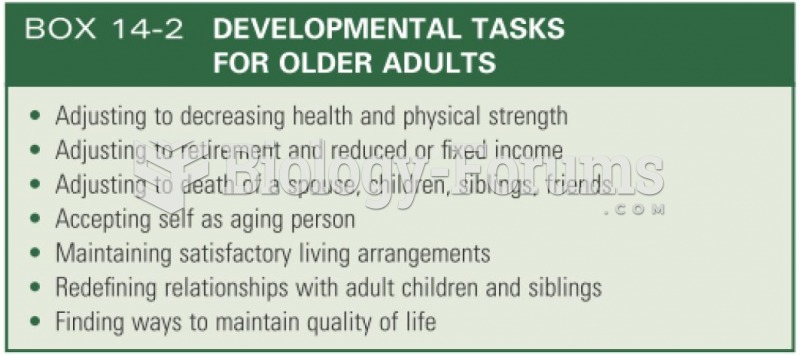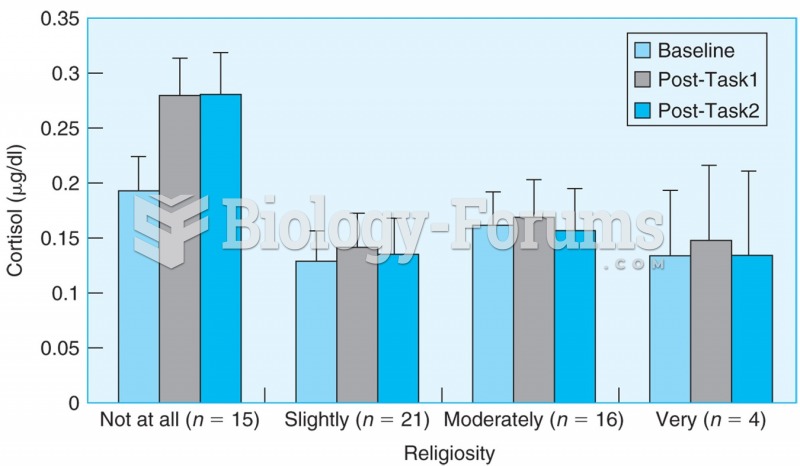Answer to Question 1
D
Nurses are often important confidants and providers of social support in the lives of older adults. The diversity of cultures and individuals in a society such as the United States means that norms are almost nonexistent for those older than 80 years. Older adults have a great deal to contribute in wisdom and by example. E-mail and online chat rooms are a means of contact and social sup-port for many older adults.
Answer to Question 2
C
The nurse helps the patient with COPD maintain health and wellness by preventing infection. To accomplish this, the nurse instructs the patient to avoid people with contagious illnesses to reduce exposure to communicable diseases and to wash hands frequently to reduce exposure to microorganisms as potential pathogens. Following these instructions will help the patient avoid hospitalizations for COPD; a pulmonary infection can have a devastating impact on a patient who has compromised pulmonary reserves. Fluid and exudates accumulate in the lungs to de-crease oxygenation and ventilation, and the patient with COPD is less able to cough and expel sputum.
The nurse teaches the patient to sit upright to ease breathing for transient dyspnea that oc-curs after exertion or while eating. This technique, however, is unlikely to prevent a hospitaliza-tion for the patient with an exacerbation of COPD. The patient with COPD regularly uses oxygen for dyspnea as prescribed. Oxygen provides symptomatic relief of dyspnea but does not prevent hospitalizations for exacerbated COPD. Eating nutrient- and calorie-dense food is also important. Patients with COPD work very hard at breathing; therefore the patient needs the calories and nutrition to supply fuel for the work of breathing. In addition, patients with COPD should eat these foods because eating them in sufficient quantities to meet their needs is often difficult; therefore the food they do eat must contain many calories and nutrients. Nutritional issues are not the most important aspect of preventative therapy for patients with COPD; an infection is more likely to cause a more devastating problem.







